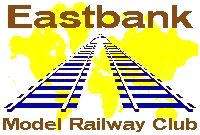
Tri-ang Mk.1 & Mk.2
Coaches
Extending the range
|
|
Tri-ang Mk.1 & Mk.2
Coaches |
There were many items of ingenious design introduced by Tri-ang Railways over the years but one new item illustrated in the 1961 catalogue that is worthy of some mention is the BR Mk.I Sleeping Car (SLSTP, sleeper second class, twin berth and pantry, to explain the code).
Why and what, you may reiterate is significant about just a carriage? Surely carriages are all much the same? Don't you believe it. To explain, this was the first model of a Mk.I vehicle of accurate detail and scale length to be offered to the model railway fraternity and it also possessed a crucial design feature, it was of modular construction.
The carriage consisted of a moulding of the underframe, ends and gangways onto which were attached the two bogies by means of rivets. The carriage sides slotted into the underframe moulding, the interior unit dropped in and the one piece roof slotted onto the ends and sides forming a robust and attractive ready to run carriage.
The significance of this method of construction is that almost any type of Mk.I carriage could be produced, just by varying the sides and interior. Even alternative bogies such as the B4 could be used and did in fact happen during the Tri-ang Hornby era.
In addition to the sleeping car, a further four types of Mk.I were introduced the following year in 1962, a Composite Corridor (CK), a Brake Second Corridor (BSK), a Restaurant Miniature Buffet (RMB) and a Gangwayed Brake Van (BG). However, this latter one was not the correct length as the real ones were 57 feet long whilst all the other vehicles were 64 feet long. That is a minor criticism though. The underframe, bogies and roof were also utilised in production of Caledonian type carriages which were subsequently also made in a variety of other company's colours. Also, the LNER Thompson coaches shared the underframes, bogies and roof. All that was new was the carriage sides. No interior was installed in these vehicles. You can't say Hornby have not had good value out of this idea as the Mk.I's were still in production in 2007.
There is one question that does arise and that is why did Tri-ang Railways and Hornby for that matter stop at only producing five types of Mk.I carriage? The most numerical Mk.I vehicles built were the 64 seat Tourist Second Open (TSO) and Second Corridor (SK) yet these have not been produced. Many other prototype Mk.I's were built in large numbers such as the Corridor First (FK), Brake Second Open (BSO) and Restaurant Buffet (RB) so models of these would have permitted the make up of realistic 00 scale train formations in stead of being all composites.
The modular construction method was so innovative that Trix replicated the idea for their Mk.I models but they unfortunately duplicated Tri-ang with the CK and RMB. However, they did produce a Brake Composite Corridor (BCK), a model not made by Tri-ang.
So now you are wondering as to the purpose of this story. As the real Mk.I's use a number of shared components and the Tri-ang models are of modular constructed, it should be fairly straightforward to make models of Mk.I's not provided in ready to run format. Almost all can be made using existing Tri-ang parts but economy does enter into the equation. The SK and TSO are the most economic models since these require parts from just two BSK's. The BSO, BCK and BFK are also possible without the utilisation of more than two vehicles as long as the brake parts left from making the TSO and SK models are used. Also, with two corridor sides of the CK left from making the BFK, a model of a most obscure Mk.I may be made, a Bullion Van (SLB). However an FK would require the consumption of no less that four CK's, therefore this is not really an economical route to follow.
In the latter part of the 1960ís Tri-ang Hornby introduced their Mk.2 coaches but typically did not produce a complete range. Of the five basic types of prototype coaches built, the SO, TSO, BFK, BSO and FK, only models of the TSO and BFK were made. A model of the BSO is very easy to represent as it only requires the replacement of the compartment interior with one of open layout. On the real Mk.2 and Mk.2a BFK and BSO, the body and window spacing is identical therefore standard class passengers get the same seat spacing as first class.
Since the Mk.2 models are not of modular construction, making a model of the FK is not so straightforward as the Mk.1 variants and some major plastic surgery is necessary. Two brake coaches are required to make the FK model. Passenger windows, toilet windows and doors have to be transposed to form the correct layout for this coach. An additional off centre intermediate door is also required on the corridor side. The two coach interiors require to be cut and reformed in the appropriate seven compartment layout.
Now for a bit of fantasy as to what could have happened. See the Models page for some images of Tri-ang Railways, Tri-ang Hornby and other model vehicles that could have been.